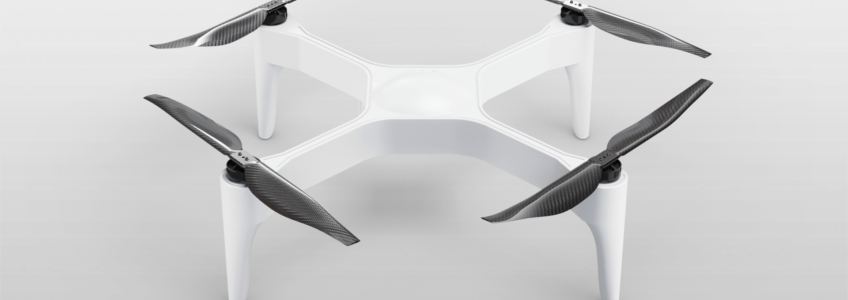The future of aviation may be closer than we think thanks to an electric aircraft start-up company, Impossible Aerospace. One of their newly-designed electric drones is capable of flying non-stop for two hours. With $9.4 million in funding from Airbus and two Silicon Valley venture capital firms, electric drones are just the beginning.
Spencer Gore, CEO and founder of Impossible Aerospace, is a former Tesla battery engineer with invaluable industry experience. His vision is to transform aviation using electric drones as proof of concept. The plan is to make longer-range electric passenger aircraft with today’s low energy-density batteries. If all goes according to plan, the future looks bright for zero-emission passenger aircraft. We take a closer look at the technology and the young mastermind behind it all.
Electric Drones And Technology
Impossible Aerospace used special techniques to house conventional lithium ion battery cells as structural elements. In other words, the power source of the drone doubles as the primary structure. This allowed them to pack more battery power into the drone at an equivalent weight. Depending on payload, approximately 70% of the drone’s weight is battery, compared to 20% for competing drones of a similar size.
Un-laden, the US-1 weighs 14 pounds (6,3 kg) and measures 30 x 30 cm with a top speed of 42 mph (67 km/h). It is about five times heavier than the Phantom 4 Pro drone from DJI and not surprising considering the larger lithium-ion battery.
The US-1 electric drones are optimised for continuous hovering and surveillance with likely applications in law enforcement. In fact, they are already selling the US-1 with all the added features to firefighters, police departments and rescue teams in the US. Even when equipped with optical or thermal sensors weighing 4.4 pounds, the US-1 electric drone has 90-minutes flight time. The “battery-first” approach was key in the development process. Impossible Aerospace suggests that you can charge the battery in under an hour which means quick turnaround times.
According to Philip Finnegan, an analyst at Teal Group tracking the UAV industry, “Focusing on the government market first is very smart and if they can achieve these flight times with a payload, that is impressive and certainly positions them well.” In addition, Teal Group estimates that the US civil government market for drones could be worth close to $300 million from 2018 to 2027.
Here is the first look at what we can expect from the US-1 electric drones:
Where It All Began
As mentioned earlier, Spencer Gore is founder and CEO of Impossible Aerospace and he has big plans for electric drones. Gore studied Aerospace Engineering at the University of Illinois at before switching his major to engineering physics in his junior year. He protested over the curriculum stating that he did not want to take a class on gas turbine propulsion and wanted to study electric propulsion instead.
After graduating, Gore worked at Tesla for a year and a half as a battery design engineer for the Tesla Model S and Model 3. He realised that drone and electric aircraft developers were making the same mistakes automakers made with initial electric cars. The problem is in the design process where they only add the battery at the end. With their electric drones, Gore decided to turn most of the structure into a power source.
The company’s patent application outlines methods to package battery cells between planar substrates acting as load-bearing structures. They also be curved, like aircraft fuselages, wings or tails. While traveling inside a tube surrounded by lithium batteries may sound alarming due to fire risks, Gore believes it’s not too difficult to engineer safe lithium-ion battery packs today. Besides, the greater density of jet fuel (about 40 times) makes it far more flammable than batteries.
According to Gore, “If you look at the auto industry, the only time you see a battery fire is in a high-speed collision, and that’s not something that happens to aircraft often. I don’t think that the fire risk is what stops electric aircraft, it’s instead trying to overcome the massive advantage in energy density that conventional fuel provides.”
What Lies Ahead For Electric Drones
In addition to the massive contribution to greenhouse gas emissions of aviation, the industry is set to expand over the next few decades. Global commercial airline fleets could more than double to 50 000 airplanes by 2040.
Gore plans to use all the money the company makes from drones and investing it into his main goal which is developing larger zero-emissions electric aircraft. The company plans to start shipping the drone later this year at a base price of around $7,000 (£5,400)*.
For more interesting articles on technology, advanced manufacturing and precision engineering, visit our blog site or find us on social media. PRV Engineering manufacture for a wide range of industries include automotive, aerospace, defence, rail and construction.
* Price is accurate as of September 11, 2018 and excludes accessories such as cameras or GPS tracking.


Recent Comments